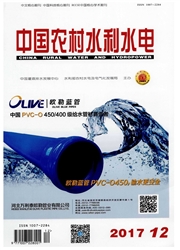

 中文摘要:
中文摘要:
针对云南滇池高原湖泊湿地植物生长种类,采用水槽实验,进行了三种流量、三种不同生长期植物的植物带前、中、后断面沿程流速和垂线流速分布的实验,通过水槽实验研究,分析了植物生长对水流结构影响机理。实验研究表明:①种植物时,植物带前各断面流速比无植物时都有一定的减小,植物对水流有明显的阻滞作用。植物带段过流流速沿程逐渐增加,在一定距离后达到最大值;同一流量条件下,随植物的生长,对水流的阻滞作用越明显,流速变化越大。植物大小一定时,流量越大,植物中流速达到最大值的距离越长。②植物段水流垂线流速分布与明渠恒定流垂线流速分布规律有所不同,植物底部流速比明渠恒定流要小,水面流速比明渠恒定流要大;植物带后水流流态恢复到明渠恒定流流态需要一定的距离。
 英文摘要:
英文摘要:
A flume experiment with various species of wetland vegetation in the altiplano lake of Yunnan Dianchi is carried out in three different discharge plants in different growth periods to analyze the influence caused by the plant growth on the flow structure. And research is clone on the frictional and vertical velocity in different cross-sections of the vegetation zone. The experiment results prove that : ①plants can provide a distinct frictional interference for the flow compared with the velocity in non-plants section and the veloci- ty before the vegetation zone is reduced. But velocity increases gradually along the way in the vegetation zone and reaches a maximum velocity at a certain distance. If the discharge is fixed, as the plants grow, the frictional interference for the flow will he more obvious and velocity will be more fluctuant. If the size of plants is fixed, when the discharge increases, the distance in vegetation zone becomes longer to reach a maximum velocity. ②The distribution of vertical velocity for the flow in the plants is different from that for the steady flow in the open channel, the velocity at the bottom of the plants is smaller than steady flow in the open channel, but the velocity at the water surface is stronger than it; and it takes certain distance for the flow behind the plants to return back to the steady flow in the open channel.
 同期刊论文项目
同期刊论文项目
 同项目期刊论文
同项目期刊论文
 期刊信息
期刊信息
